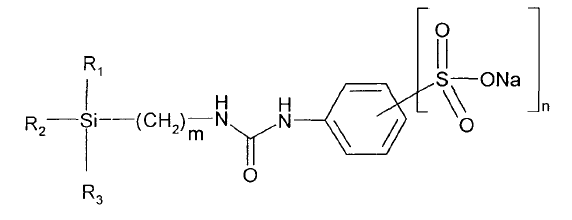Hybrid sulphonated precursor, its synthesis process and its uses as hybrid proton exchange membrane
Référence
01858-01-03
Mots-clés
Statut des brevets
French priority patent application FR0801508 filed on March 19th 2008 and entitled: « Précurseur hybride sulfoné, son procédé de synthèse et ses utilisations » French patent application FR0801509 filed on March 19th 2008 and entitled “Matériau hybride électrolyte superconducteur, son procédé de préparation et ses applications”.
Inventeurs
Mihail BARBOUI
Mathieu MICHAU
Statut commercial
Exclusive or non exclusive licenses
Laboratoire
Institut Européen des Membranes (IEM, UMR5635), Montpellier, France
Description
CONTEXT
One of the first proton-trasnsporting polymers used for the production of membrane for proton exchange membrane fuel cell, is Nafion, a perfluorosulfonic polymer developped by Dupont. Numerous proton-trasnsporting polymers-based membranes also exist derived from perfluorosulfonic polymers. These membranes are known to be by nature very stable chemically, thermally and mechanically. However they have to operate at a temperature of less than 90°C and always have to remain saturated with water in order to make possible effective movement of the H+ ions. The synthesis of these membranes is also lenghtly and difficult. This is why, in order to overcome the weaknesses of these systems, numerous studies on modification by incorporation of inorganic phases have been carried out in recent years.
TECHNICAL DESCRIPTION
In the present work, the inventors have developed new hybrid sulphonated precursors as well as its use for the preparation of hybrid proton exchange membranes:

(3-(triethoxysilyl)propyl)-3-(sodiumsulfonate)phenyl)urea is particularly preferred:

The preparation of proton exchange membranes from these precursors is classically realized through a nucleophilic catalyzed sol-gel polymerization knowing that a plastifying precursors can be added, preferentially bis(3-(triethoxysilyl)propylurea)-3-(polyTHF).
This strategy leads to a new hybrid superconducting, highly organized and crystalline membrane.
The conductivity of said membrane at 25°C is 4 – 8 times higher than that of NAFION 117, the reference membrane for the typical fuel cells PEMFC. Other properties, mechanical in particular are comparable. As for the swelling rate, it is almost doubled.
Such precursors can also be used as hybrid functional charges in a host structure, linking agent, fluidifying agent, hygroscopic agent, for the production by sol gel polymerization of hybrid functional nanoparticles and for the coating by grafting through sol-gel polymerisation.
BENEFITS
The obtained membrane offers numerous benefits compared to existing membrane:
- Highly conductor;
- Highly organized and crystalline;
- Chemical and thermal stability;
INDUSTRIAL APPLICATIONS
The main application of these precursors is for the preparation of proton exchange membrane for PEMFC.
For further information, please contact us (Ref 01858-01)